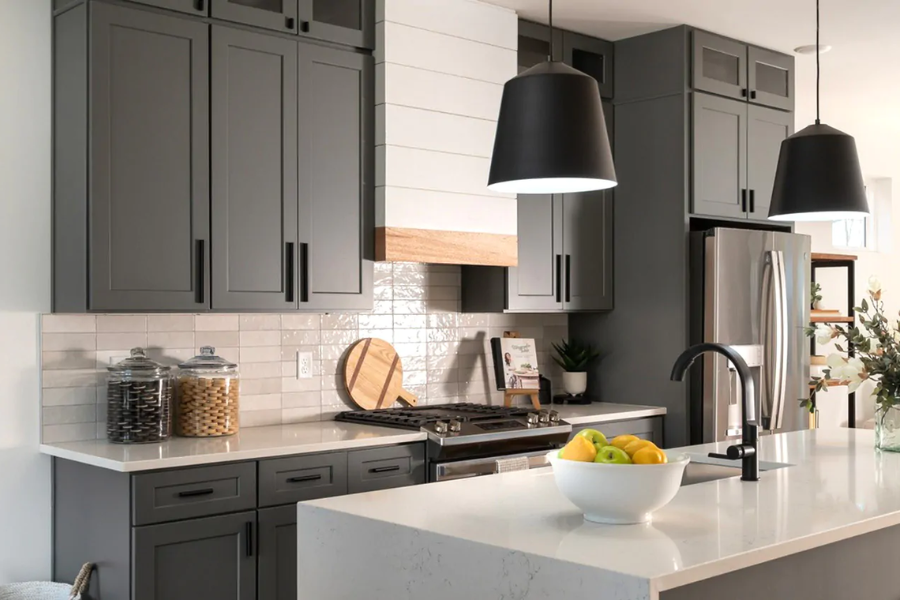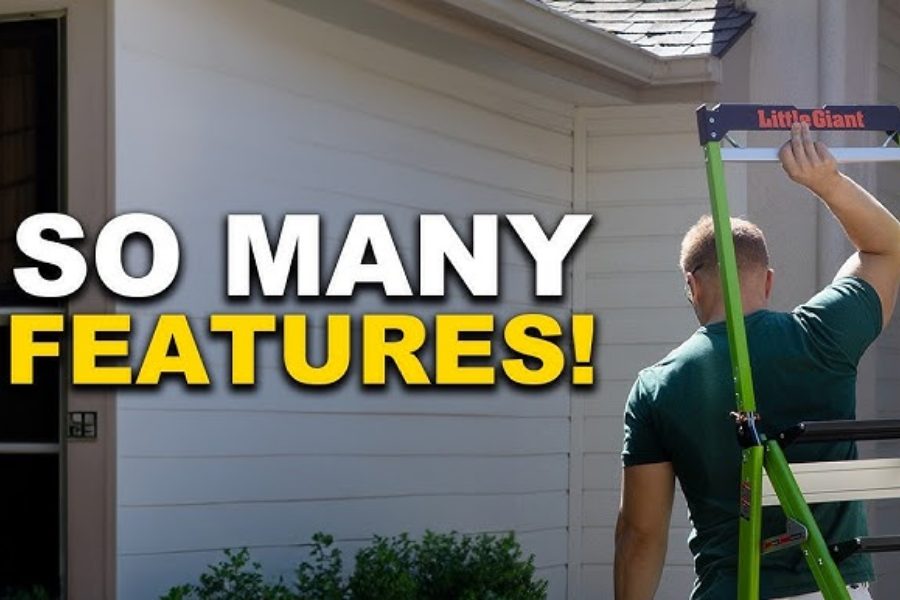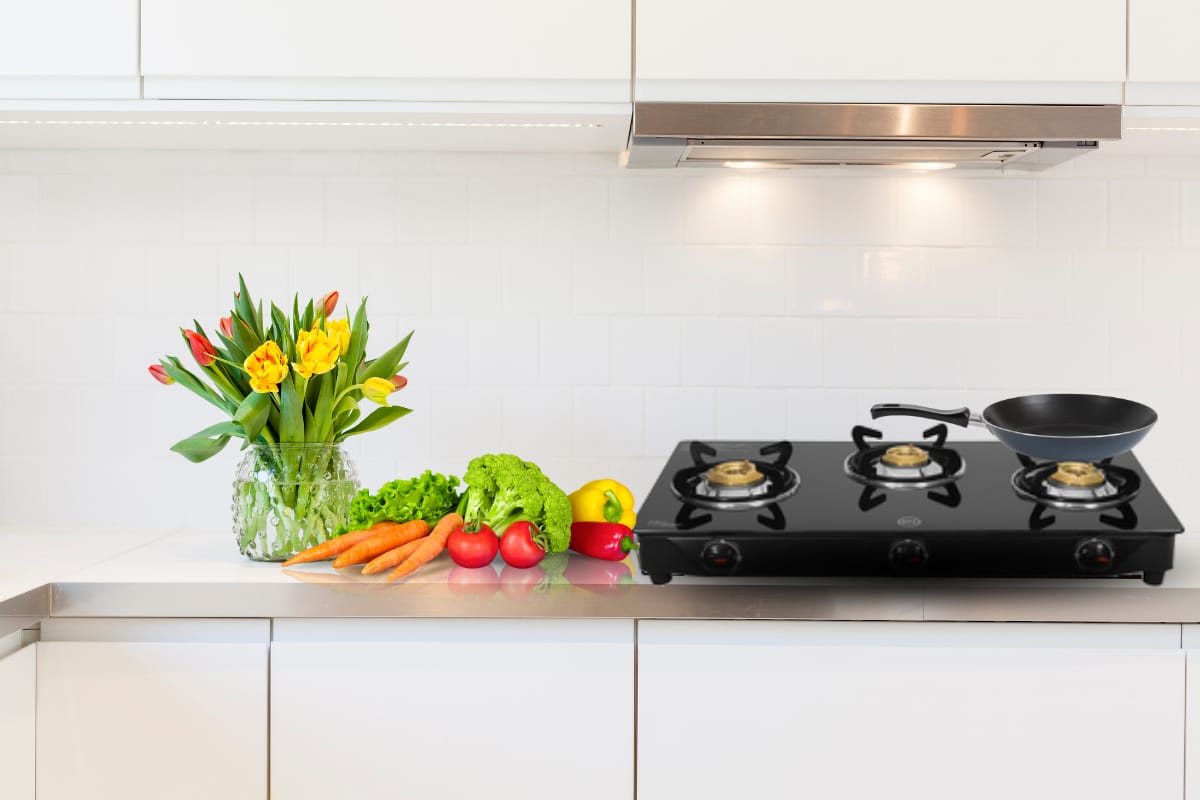Understanding Cabinet Styles
Choosing the right cabinet style is a critical decision that sets the tone for your kitchen. From modern to traditional, the style dictates the overall aesthetic. Some popular styles include shaker, flat-panel, and raised-panel cabinets. Shaker cabinets are known for their simple, clean lines and versatile design, making them a favorite for modern and traditional kitchens. Flat-panel or slab cabinets offer a sleek, contemporary look that is perfect for minimalist homes. On the other hand, raised-panel cabinets provide a more decorative option, often featuring intricate designs that add a touch of elegance. Each style has its charm and can significantly impact the mood and functionality of your kitchen.
Materials Choice: Pros and Cons
Your kitchen cabinets material is vital in its durability, appearance, and cost. Common materials include solid wood, plywood, medium-density fiberboard (MDF), and particleboard. Solid wood is highly durable and has a classic, timeless look, but it can be expensive and may expand or contract with temperature changes. Plywood, known for its strength and resistance to moisture, is a cost-effective alternative often used in high-quality cabinets. MDF is another affordable option, offering a smooth finish that’s excellent for painted cabinets but lacks the natural grain of real wood. Particleboard is the most economical choice, but it needs to be more durable and more prone to damage from moisture. Each material has advantages and drawbacks, so weighing these factors based on your specific needs and budget is essential.
Measuring Your Space
Accurately measuring your kitchen space is crucial for a seamless cabinet installation. To begin, measure the dimensions of the area where the cabinets will be placed, taking note of any windows, appliances, and electrical outlets. When choosing the perfect kitchen cabinets for your home, measuring your space accurately is essential; similarly, when installing bathroom cabinets, precise measurements ensure a seamless fit and maximize storage efficiency. Measure the space’s height, width, and depth, ensuring you account for any obstructions or irregularities. Proper measurements ensure your cabinets fit perfectly, leaving no gaps or overhangs. Precision is critical; even minor measurement errors can lead to significant installation issues, so double-check your work.
Incorporating Current Trends
Staying updated with the latest kitchen cabinet trends can significantly boost the appeal of your home. Trends like open shelving, mixed materials, and bold colors are becoming increasingly popular. Open shelving creates an airy, open feel and allows you to showcase your favorite dishes and decor. Mixed materials, such as combining wood with metal accents, can add a modern industrial look, giving your kitchen a unique edge. Bold colors, like navy blue or forest green, make a statement and bring vibrancy to your space. Incorporating these trends can personalize your kitchen, making it more visually appealing and reflective of your style.
Budget Considerations
Budgeting is essential when planning for new kitchen cabinets. Understanding what impacts the cost can help you make informed decisions. Factors such as the choice of materials, customizations, and installation fees play a role. For instance, custom cabinets made from high-end materials will be significantly more expensive than stock cabinets made from standard materials. To manage your expenses, consider cost-saving options without compromising on quality. Using veneer instead of solid wood can offer a similar look at a lower price. Refacing or painting existing cabinets instead of replacing them can save money. Proper budgeting ensures you get the best value for your investment, enhancing your kitchen’s functionality and aesthetics.
Installation Tips
Proper installation is crucial for ensuring that your cabinets are sturdy and long-lasting. Whether hiring a professional or going the DIY route, following best practices for cabinet installation is essential. Begin by ensuring that your walls are straight and your floors are level. Use a level to check this; uneven surfaces can lead to misaligned cabinets. When installing the cabinets, start with the upper cabinets to prevent any damage to the lower ones. Securely anchor them to the wall studs, and make sure they are level and plumb before tightening the screws.
Maintenance and Care
Maintaining your kitchen cabinets will extend their lifespan and keep them looking new. Regular cleaning is essential; wipe down the surfaces with a damp cloth and a mild detergent to prevent grease and dirt buildup. Avoid using harsh chemicals that can damage the finish. Additionally, promptly addressing any damages, such as chips or scratches, is crucial to prevent further deterioration. Consider using touch-up pens or markers that match your cabinet color for minor repairs. Regularly check and tighten any loose hardware, as loose screws or hinges can affect the functionality of your cabinets. Proper maintenance ensures that your kitchen remains functional and beautiful for years.
Final Thoughts
Investing in suitable kitchen cabinets can dramatically enhance the functionality and appearance of your kitchen. By carefully considering styles, materials, and current trends, you can create a space that truly reflects your taste and meets your needs. Remember, a well-planned kitchen looks excellent, making cooking and entertaining more enjoyable and efficient. Proper measuring, budgeting, and maintenance are critical to a successful kitchen renovation, ensuring your investment stands the test of time.
Get the latest scoop and updates on essentialtribune








